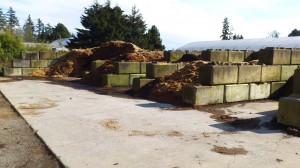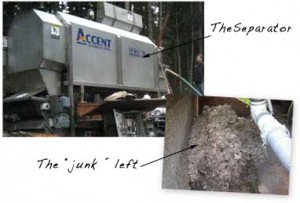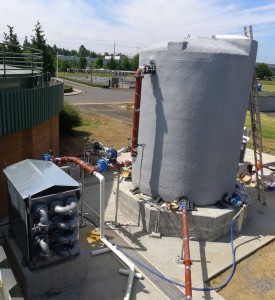Recently I put together a research project with the help of the Center for Sustainable Food Systems and the UBC SEEDS program to develop an on-site composting program at the UBC farm. I was surprised to learn that this was not already happening, but I soon realized why. It would be a huge undertaking…
Although composting is of interest to me, what drew me into this project was the ability for a farm-composting operation to contribute to the 2015 Zero-Waste Campus goals of the university. According to the 2010 waste management study, ~40% of all the waste that the UBC campus sends to the landfill is compostable organic waste. Add to that the fact that the UBC farm purchases tonnes of compost each year for their normal operations, and it seemed like a win-win situation.
There are multiple methods of composting that will meet the Organic Matter Recycling Regulations in British Columbia, but whichever method we choose must be able to function on the existing 80’x50′ concrete pad at the farm.

The operation must be able to accommodate variable volumes of organic material throughout the year while remaining viable.
First steps will be assessing whether or not an agricultural grade compost can be produced from the feedstock available on campus. Once the correct ratio of organics and bulking agents are obtained, how much and how frequently organic waste is collected from UBC can be determined.
Hopefully, this program can divert a significant amount of UBC’s organic waste from the landfill, contributing to the 2015 Zero Waste targets.
Updates on this project will follow as it progesses!
Tags: No Comments.





